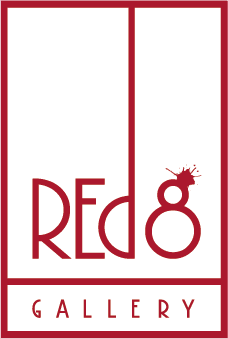Isshaq Ismail
'I am interested in breaking the mould of painting by subverting and interrogating the preconceived notion of the idea of beauty within the canon of painting, primarily figurative painting, and challenging the perception of aesthetics'. Isshaq Ismail
The vibrant, monochrome, bold and colourful paintings of Isshaq Ismail explore and investigate how the social, cultural, and political aspects of the modern world impact identity. Ismail paints faces and figures in impasto, typically depicting them with accentuated grotesque features and using black, brown, Blue, Purple, Green, Ochre and Red hues. His portraits also reflect his interest in themes such as desire, resilience, power, joy and hope; they tell stories and universal truths about societies around the world. Ismail studied at the Ghanatta College of Arts and Design, he lives and works in Accra, Ghana.
Ismail’s paintings demonstrate a fidelity to what he has termed “infantile semi-abstraction,” a style that performs a studied, technically and conceptually rich form of childish abandon. Marked by the liberal use of impasto, gestural lines, and a vibrant colour palette, his works speak to the human condition in postmodernity. The thick layers of paint that compose his figures add texture and depth, belying the simplicity that initially greets the viewer’s eye. Ismail notes that his technique of painting mimics how a sculptor manipulates clay, which intimates a tactility to how the artist brings these subjects into being. There is an attentive freedom to the thick brushstrokes that sweep across canvas, imbuing the scene with the joyful possibility of liberation through non-conformity. Bold, bright, vivid colours saturate the scene, encasing both figure and background in pulsating energy. The figures themselves are surreal imagining of the human. Magnified lips, impressionistic noses, and a two-dimensionality to faces and bodies produce portraits that are raw and organic in their commentary on human life. Ismail explores the grotesque as an aesthetic form, asking what it means to confront the ugly and misshapen in a world, especially an artworld, that is fixated on beauty. These works stake a political argument in their interrogation of beauty standards, pressing questions of who gets to be deemed lovely and who languishes in the realm of the hideous and, so, disposable.



